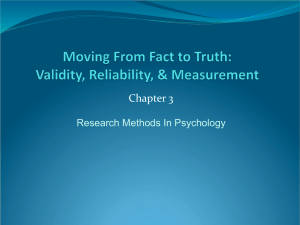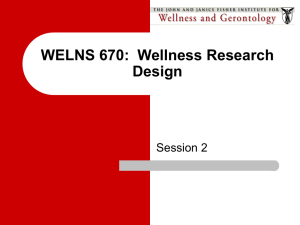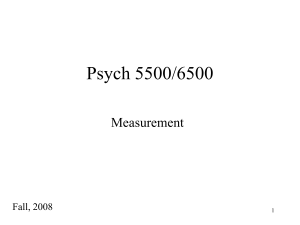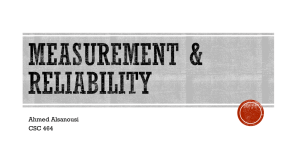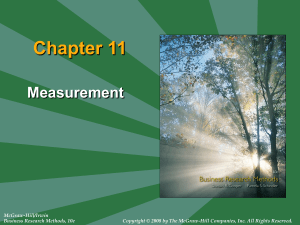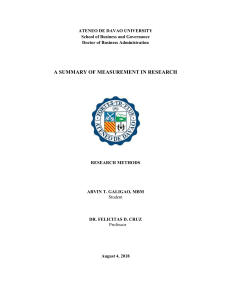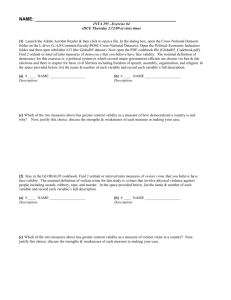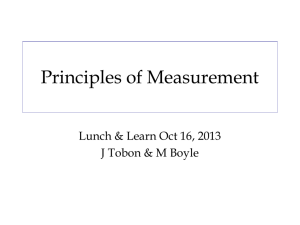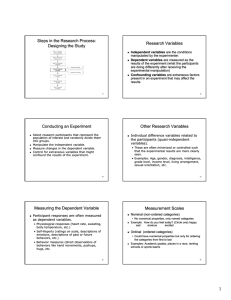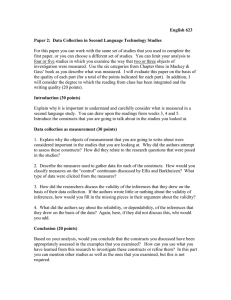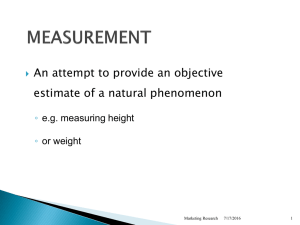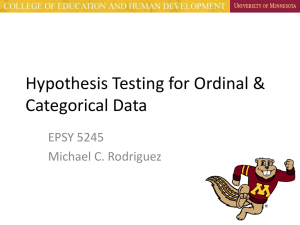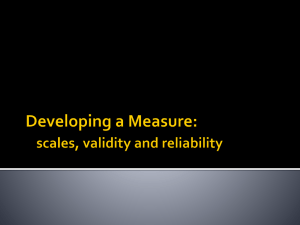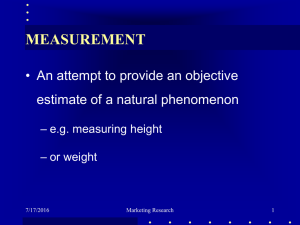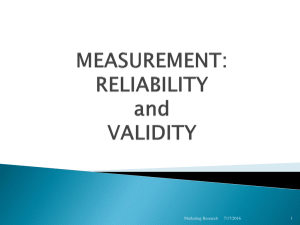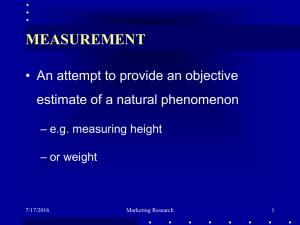Chapter 4 - Bakersfield College
advertisement
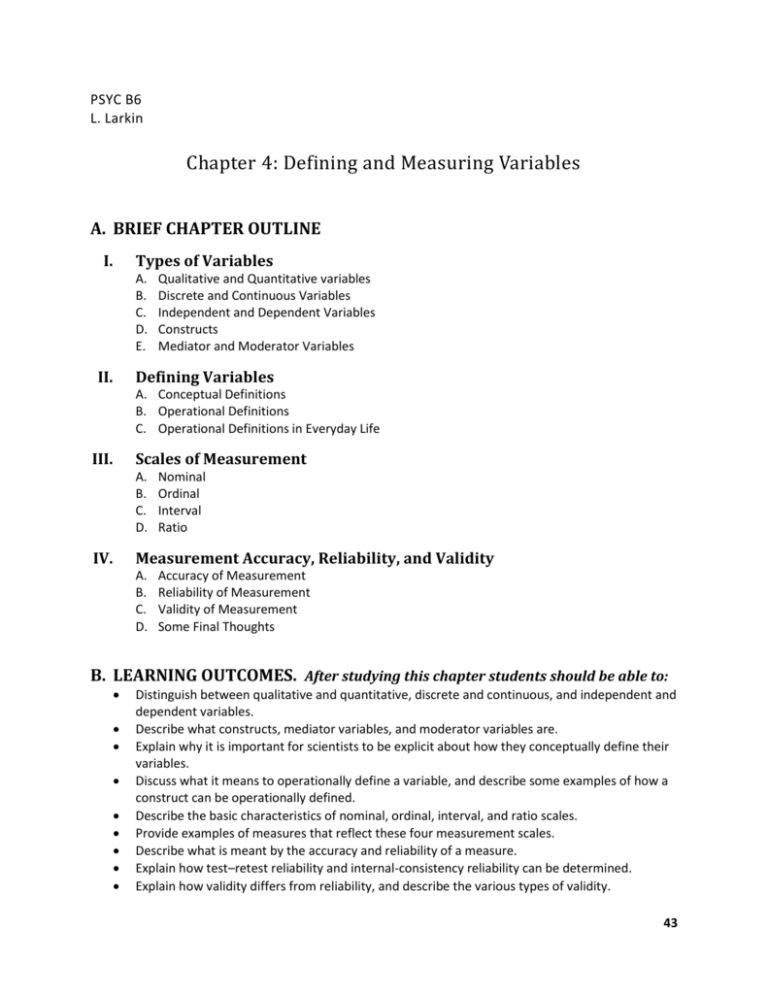
PSYC B6 L. Larkin Chapter 4: Defining and Measuring Variables A. BRIEF CHAPTER OUTLINE I. Types of Variables A. B. C. D. E. II. Qualitative and Quantitative variables Discrete and Continuous Variables Independent and Dependent Variables Constructs Mediator and Moderator Variables Defining Variables A. Conceptual Definitions B. Operational Definitions C. Operational Definitions in Everyday Life III. Scales of Measurement A. B. C. D. IV. Nominal Ordinal Interval Ratio Measurement Accuracy, Reliability, and Validity A. B. C. D. Accuracy of Measurement Reliability of Measurement Validity of Measurement Some Final Thoughts B. LEARNING OUTCOMES. After studying this chapter students should be able to: Distinguish between qualitative and quantitative, discrete and continuous, and independent and dependent variables. Describe what constructs, mediator variables, and moderator variables are. Explain why it is important for scientists to be explicit about how they conceptually define their variables. Discuss what it means to operationally define a variable, and describe some examples of how a construct can be operationally defined. Describe the basic characteristics of nominal, ordinal, interval, and ratio scales. Provide examples of measures that reflect these four measurement scales. Describe what is meant by the accuracy and reliability of a measure. Explain how test–retest reliability and internal-consistency reliability can be determined. Explain how validity differs from reliability, and describe the various types of validity. 43
